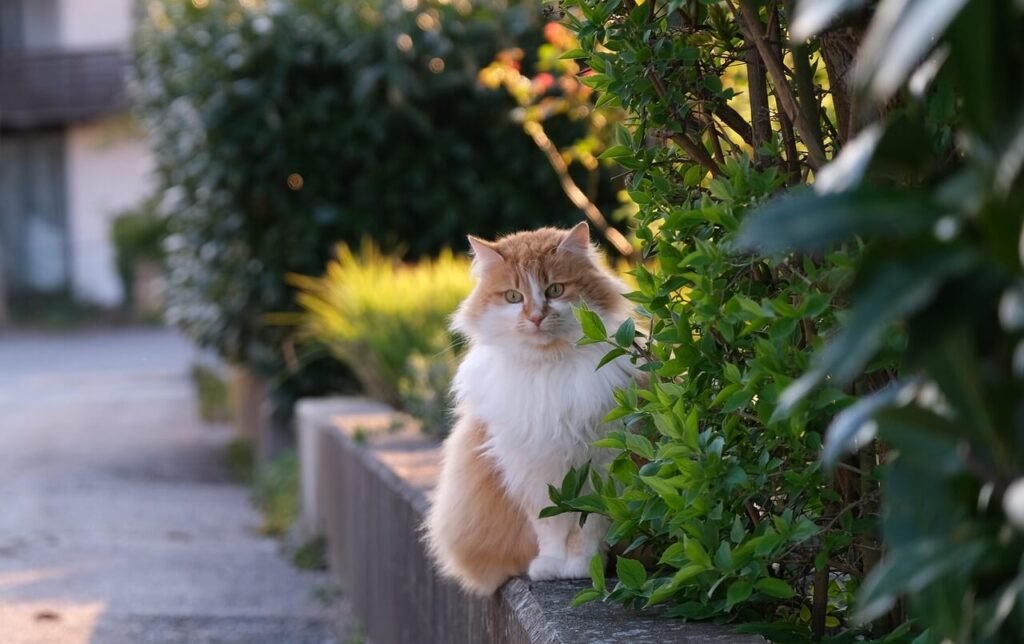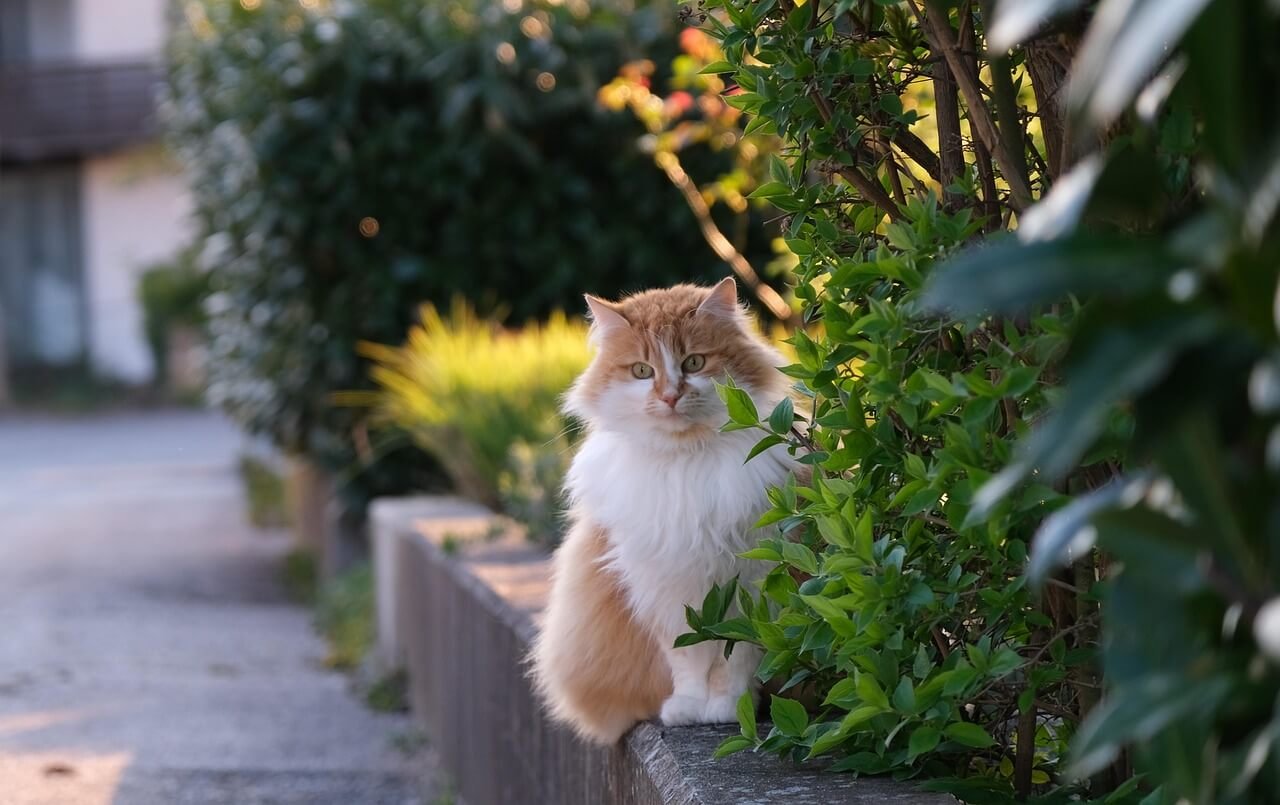Cat Tapping Tail: Decoding This Quirky Behavior
If you’ve ever noticed your cat rhythmically tapping their tail, you might have wondered what it means. Is it a sign of happiness, frustration, or something else entirely? Cats are masters of non-verbal communication, and their tails play a key role in expressing their emotions and intentions. A tapping tail can convey a wide range of feelings, from playful excitement to subtle irritation. In this guide, we’ll explore the reasons behind this fascinating behavior, how to interpret it, and what you can do to better understand your feline friend. Whether you’re a seasoned cat owner or new to the world of cats, decoding your cat’s tail language will deepen your bond and help you respond to their needs more effectively.
Common Reasons Why Cats Tap Their Tails
Cats tap their tails for various reasons, and understanding these motivations can give you valuable insight into their mood and mindset. Here are some common explanations for this behavior:
Playfulness : A gently tapping tail often signals that your cat is feeling energetic and ready to play.
Curiosity : When your cat is focused on something intriguing, like a bird outside the window, their tail may tap as they observe intently.
Frustration or Irritation : A more forceful or rapid tail tap can indicate annoyance, especially if they’re disturbed during rest or grooming.
Anticipation : Cats sometimes tap their tails when they’re waiting for something, such as food or attention from you.
Overstimulation : During petting sessions, a tapping tail might mean your cat is becoming overstimulated and needs a break.
By paying attention to the context and intensity of the tail tapping, you can better interpret what your cat is trying to communicate.
How to Respond to Your Cat’s Tail Tapping
When your cat starts tapping their tail, your response can either strengthen your bond or inadvertently upset them further. Here’s how to handle different scenarios appropriately:
Engage in Play : If the tail tapping indicates playfulness, grab a toy and engage them in a fun activity to channel their energy.
Observe Quietly : For curiosity-driven tail tapping, avoid interrupting and let your cat explore their surroundings at their own pace.
Give Them Space : If the tapping seems linked to frustration, back off and allow your cat to calm down before interacting again.
Check for Triggers : Look for potential stressors, such as loud noises or unfamiliar scents, that might be causing irritation.
Stop Petting : If the tail tapping occurs during petting, pause and give your cat a moment to relax—overstimulation can lead to biting or scratching.
Responding thoughtfully to your cat’s tail language ensures you meet their emotional needs while maintaining a harmonious relationship.
Check this guide 👉Cat Tail Emotions: Best 7 Expert Tips!
Check this guide 👉Decoding the Mystery of Cat Tail Wagging: Best 7 Tips!
Check this guide 👉The Question Mark Tail Cat: Best 7 Expert Tips!

Positive Interpretations of Tail Tapping | Negative Interpretations of Tail Tapping |
|---|---|
Playful anticipation | Frustration or irritation |
Curiosity about surroundings | Overstimulation during petting |
Excitement for food or treats | Anxiety caused by environmental changes |
Focus on hunting or stalking behaviors | Warning sign before aggressive behavior |
Gentle self-expression | Stress due to illness or discomfort |
Other Tail Movements and What They Mean
While tail tapping is just one aspect of feline body language, cats use their tails in many other ways to express themselves. Understanding these additional movements provides a fuller picture of your cat’s emotional state.
Puffed-Up Tail : Indicates fear or defensiveness, often accompanied by an arched back.
Slow Swishing Tail : Suggests mild irritation or focus, especially when stalking prey.
High-Tipped Tail : A sign of confidence and friendliness, often seen when greeting humans or other animals.
Low-Hanging Tail : May signal insecurity, submission, or discomfort.
Wrapped Tail Around You : A gesture of affection and trust, similar to a hug.
Learning to read these cues enhances your ability to connect with your cat on a deeper level.
Tips for Strengthening Your Bond Through Tail Language
Understanding your cat’s tail language is a powerful way to build trust and strengthen your bond. Here are some practical tips to make the most of this knowledge:
Observe Consistently : Spend time watching your cat’s tail movements in different situations to identify patterns.
Respect Their Signals : Honor your cat’s communication by responding appropriately, whether it’s giving space or offering affection.
Use Positive Reinforcement : Reward calm and happy tail behaviors with treats or praise to reinforce positive associations.
Create a Safe Environment : Minimize stressors in your home to reduce instances of negative tail tapping.
Consult a Vet if Needed : Persistent unusual tail movements could indicate pain or illness, so seek professional advice if concerned.
By tuning into your cat’s tail language, you’ll foster a stronger connection and create a happier, healthier environment for them.
Recognizing When Tail Tapping Signals Overstimulation
Tail tapping can often be a subtle warning sign that your cat is becoming overstimulated. This is especially common during interactions like petting or playtime. Here are some signs to watch for:
Rapid Tail Movements : A quickly tapping or thumping tail may indicate your cat is reaching their limit.
Flattened Ears : If your cat’s ears are pulled back or flattened, it’s a clear sign they’re feeling uncomfortable.
Growling or Hissing : Vocalizations like growls or hisses often accompany tail tapping when a cat is overstimulated.
Dilated Pupils : Wide, dilated eyes suggest heightened arousal or stress.
Skin Twitching : Small muscle twitches along their back can signal irritation or sensory overload.
Paying attention to these signs helps you avoid pushing your cat past their comfort zone, ensuring a more positive interaction.
How Surroundings Affect Your Cat’s Tail Behavior
A cat’s environment plays a significant role in their behavior, including tail tapping. Changes or disruptions in their surroundings can trigger this response. Here are some environmental factors to consider:
Loud Noises : Sudden or persistent sounds, like vacuum cleaners or construction, can cause stress-induced tail tapping.
New Pets or People : The introduction of unfamiliar animals or guests may make your cat feel uneasy.
Changes in Routine : Alterations to feeding times or daily schedules can lead to anxiety and tail movements.
Unfamiliar Scents : Strong odors from cleaning products or new furniture might overwhelm your cat’s sensitive senses.
Limited Space : A lack of hiding spots or vertical territory can heighten stress levels.
By creating a stable and enriching environment, you can reduce the likelihood of stress-related tail tapping.
Channeling Your Cat’s Energy into Positive Outlets
If your cat’s tail tapping stems from excitement or excess energy, engaging them in fun activities can help redirect their focus. These activities not only entertain your cat but also strengthen your bond.
Interactive Toys : Feather wands or laser pointers encourage hunting behaviors and burn off energy.
Food Puzzle Toys : These stimulate your cat mentally while rewarding them with treats or kibble.
Window Perches : A comfy spot by the window lets your cat observe birds or outdoor activity safely.
Catnip Toys : For cats who enjoy catnip, these toys can provide a playful distraction.
Scheduled Playtime : Regular, structured play sessions help release pent-up energy and reduce boredom.
Providing outlets for your cat’s natural instincts ensures they stay entertained and less likely to exhibit restless behaviors like excessive tail tapping.
Frequently Asked Questions About Cat Tail Tapping
Is tail tapping always a bad sign in cats?
No, tail tapping can indicate both positive (playfulness) and negative (frustration) emotions depending on the context.
Why does my cat tap their tail while sleeping? :
This could be a reflexive movement or a sign that they’re dreaming, much like humans twitch during sleep.
Can tail tapping mean my cat is sick?
While not always related to illness, persistent or unusual tail movements should be evaluated by a vet to rule out health issues.
How can I tell if my cat’s tail tapping is playful or irritated?
Look at the intensity—if it’s gentle and rhythmic, it’s likely playful; if it’s rapid and forceful, it may indicate irritation.
Should I stop petting my cat if their tail starts tapping?
Yes, stopping petting gives your cat a chance to reset and prevents overstimulation, which could lead to aggression.
Unlock the Secrets of Your Cat’s Tail Language
Your cat’s tail is a powerful tool for communication, and understanding its movements, including tail tapping, allows you to better meet their emotional and physical needs. From playful excitement to subtle warnings, each flick and tap tells a story about how your cat is feeling. By observing closely and responding thoughtfully, you can deepen your bond and ensure your feline companion feels understood and valued. Remember, every cat is unique, so take the time to learn your pet’s individual quirks and preferences. With patience and attentiveness, you’ll become fluent in the silent yet expressive language of your cat’s tail.
Canned Pumpkin for Cat Diarrhea: Best 7 Expert Tips! Natural remedy to firm stools, soothe upset bellies, and support gut health safely.
Can a Cat Give You Scabies? Best 7 Expert Tips! Discover the truth about feline mites, human skin risks, and how to protect yourself—without panic.
Cat Flea vs Human Flea: Best 7 Expert Tips! Discover the truth about bites, species, and how to eliminate infestations for good.
Weird Cat Behaviors: Best 7 Expert Tips! Discover why cats do strange things—and how to understand, not punish, their instincts for a happier home.





